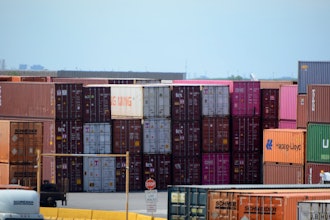
Cyberattacks are no longer a rare disruption in manufacturing—they're a constant threat. From ransomware attacks paralyzing factories to sophisticated intrusions compromising intellectual property, the manufacturing industry is now on the front lines of the cybersecurity battlefield. But here's the real issue: most manufacturing companies still think of cybersecurity as an IT problem. In reality, it’s a supply chain problem.
Let’s break that down.
Manufacturing today is a web of interconnected suppliers, partners, logistics providers, and digital systems. When one link in that chain is compromised, the ripple effects can be devastating. A cyberattack on a Tier 2 supplier, for example, could halt production at multiple assembly plants downstream. That’s why cyber resilience, not just cybersecurity, must become a core focus.
The Shift from Cybersecurity to Cyber Resilience
Cybersecurity is about defense. Firewalls, antivirus software, multi-factor authentication—these are critical tools. But what happens when those defenses fail? That’s where resilience steps in. Cyber resilience assumes that attacks will happen. It focuses on detection, containment, continuity and recovery.
In a manufacturing context, this means being able to isolate affected systems without shutting down an entire facility. It means having clear communication protocols for suppliers, backup production capabilities and incident response playbooks. Attackers are strategic. They know that breaching a major OEM is difficult and time-consuming. But third-party vendors? Small suppliers with minimal cyber defenses? They’re low-hanging fruit.
Take the infamous 2013 Target breach—the attackers gained entry through an HVAC subcontractor. In the same way, attackers targeting manufacturers often go after suppliers with outdated systems or lax policies. Once inside, they can escalate to larger targets.
In 2021, a ransomware attack on JBS Foods forced the company to shut down operations in the U.S. and Australia, disrupting food supply chains globally. Another example is the 2022 cyberattack on Toyota's supplier Kojima Industries, which halted production across 14 factories in Japan for an entire day. Once inside, attackers can escalate to larger targets.
Even seemingly harmless third-party applications—like browser-based paraphrasing tools or document editors—can pose unexpected risks if they're not vetted properly. If one of these tools is compromised or misused, it can become a gateway for malware, credential theft, or unauthorized data extraction.
The Cost of Downtime
Let’s talk numbers.
The average cost of a data breach in manufacturing is around $4.5 million, according to IBM’s Cost of a Data Breach Report. But that figure doesn’t tell the whole story.
In manufacturing, downtime is brutal. A single hour of unplanned downtime can cost anywhere from $100,000 to over $1 million, depending on the facility and the product. If a cyberattack halts production for days or weeks, the losses can escalate exponentially—not just in direct revenue, but in lost contracts, compliance fines, and long-term reputational damage.
And unlike physical disruptions, cyberattacks often leave a mess behind. Restoring systems, verifying data integrity, rebuilding trust with partners—it all takes time and resources. Building cyber resilience into manufacturing supply chains isn’t just about investing in expensive technology. It’s about embedding security-minded thinking into every layer of operations.
It starts with visibility. You need to know who your suppliers are, what systems they use, and where the vulnerabilities lie. That includes managing and securing the data feeds flowing between systems in real time, as proper data feed management is a key cog in spotting inconsistencies and blind spots, and can even help detect entry points for malicious payloads
Then comes segmentation. Critical systems should be isolated so that a breach in one area doesn’t cascade through the entire network. Think of it like bulkheads on a ship—if one compartment floods, the vessel stays afloat.
Third, incident response plans should be tested, not just documented. Too many manufacturers write up impressive-sounding protocols that no one actually rehearses. When the real attack hits, confusion reigns. Real resilience means muscle memory.
Finally, resilience requires collaboration. Manufacturers must work with suppliers, IT teams, logistics partners, and even competitors to share threat intelligence and best practices. In a hyperconnected industry, no company is secure in isolation.
Regulatory, Training Pressures Are Rising
Governments are catching on. In the U.S., the Cybersecurity and Infrastructure Security Agency (CISA) has prioritized the manufacturing sector in its cybersecurity initiatives. Globally, frameworks like NIST, ISO 27001, and the EU’s NIS2 Directive are setting expectations for cyber hygiene. Companies that ignore these trends risk falling out of compliance—and losing business.
The regulatory landscape is becoming a force for resilience. It’s no longer optional. Manufacturers must demonstrate not only that they can protect themselves, but that they can recover quickly and responsibly when something goes wrong.
Cyber resilience isn’t just about abiding by laws—it’s about people. Having been the reason Stuxnet thrived, it’s already known that one of the most common attack vectors is human error: a clicked phishing link, a weak password, a misconfigured access control.
This is why training is non-negotiable. Workers on the factory floor, procurement managers, maintenance crews—everyone needs basic cyber awareness. It’s not about turning every employee into a cybersecurity expert. It’s about making security part of the culture.
Cyber drills, regular updates, and clear reporting lines can make a massive difference in how an organization detects and responds to threats. The more eyes you have on the system, the quicker you can respond.
Here’s the good news: building cyber resilience isn’t just a defensive move. It’s a strategic advantage. Customers, investors, and partners increasingly want to know how secure and reliable your operations are. Being able to demonstrate resilience can differentiate you from competitors and open up new business opportunities.
If your supply chain can adapt quickly, communicate clearly, and recover efficiently, you become a more attractive partner. You build trust. And in today’s market, trust is currency.
Cyber resilience isn’t a buzzword. It’s a business imperative for manufacturers navigating complex, interconnected supply chains. As cyber threats grow in frequency and sophistication, the old mindset of simply "keeping the bad guys out" isn’t enough. You need to plan for failure and build the capacity to bounce back fast.
The question isn’t whether your supply chain will be targeted. It’s when. And when it happens, will you bend or will you break? Manufacturing leaders who embrace cyber resilience today are laying the foundation for a safer, smarter, and more sustainable industry tomorrow.






















